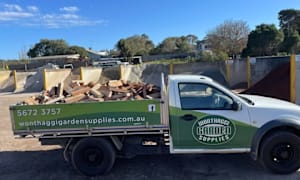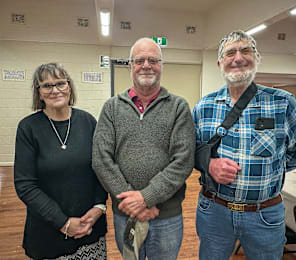SOUTH GIPPSLAND has emerged as Australia’s biggest offshore wind energy zone.
With a total of eleven active feasibility studies underway the Gippsland offshore wind industry could at its peak employ up to 17,000 local workers.
The NSW Hunter offshore wind zone located off the Hunter-Central Coast was formally declared on September 30 and is smaller than originally proposed to address community and industry concerns.
The declared area in the Hunter region avoids significant environmental areas including marine parks and avoids fish aggregating devices used for recreational fishing.
Gippsland has 11 active feasibility licences currently under consideration.
According to the Gippsland Climate Change Network, onshore and offshore wind, together with solar, batteries and pumped hydro will be able to provide reliable power around the clock as the region’s coal-fired power stations are retired.
Around 70 per cent of traditional power sector workers in the Latrobe Valley and 90 per cent of maritime industry workers are said to have the core skills needed to switch to jobs in the offshore wind energy sector with minimal training.
According to industry leader Southerly Ten a successful first project in Gippsland won’t just deliver much-needed new capacity, cut emissions and create regional jobs, it will pave the way for the rest of Australia’s offshore wind industry.
“With some of the world’s best and most consistent offshore wind conditions, existing local port and grid infrastructure to tap into, and a skilled energy workforce offshore wind power is uniquely positioned to deliver local jobs and economic opportunities.
The need to build offshore wind power is critically urgent according to Gippsland Climate Change Network Director Tony Wolfe.
“Genuine consultation is essential, with 90 percent of coal-fired capacity forecast to retire by 2035 offshore wind energy is needed to ensure energy security, price stability and a pathway to net zero.”
“Gippsland has powered Victoria for over a century, and it can continue to do so,” said Mr Wolfe.
“Yallourn power station is leaving the electricity grid in 2028, and even if we could start building offshore wind now, we won't be able to achieve the legislated target of two gigawatts by 2032.
"Offshore wind in Gippsland gives us a hugely exciting opportunity to build a brand new workforce that is gender balanced, family friendly, diverse and flexible.
“This new workforce needs to happen separately to existing oil, gas and coal workforces as those are still required until those industries shut down and finish decommissioning."
Professor Christopher Ty from the Energy Futures Network believes that with coal fired generation retiring soon offshore wind will provide the ideal, large scale, highly reliable generation needed by electricity consumers.
“The Gippsland region has traditionally powered Australian industry and households and seeing the region seize the opportunity to continue to be an energy and employment powerhouse is a great example of the prosperity renewable energy can create,” said Prof. Ty.
“The rest of Australia is watching closely as Gippsland leads the way.
“Gippsland offshore wind projects are more than just new electricity generation.
“They are the basis of a whole new industry.”
Southerly Ten is a specialist offshore wind energy developer and part of the team behind the Star of the South project backed by Copenhagen Infrastructure Partners (CIP).










